Kraków 2009-03-09
History
198c Section 1966-02-04.
OKB Mikojan and Guriewicz MiG-21 PFM in Poland.

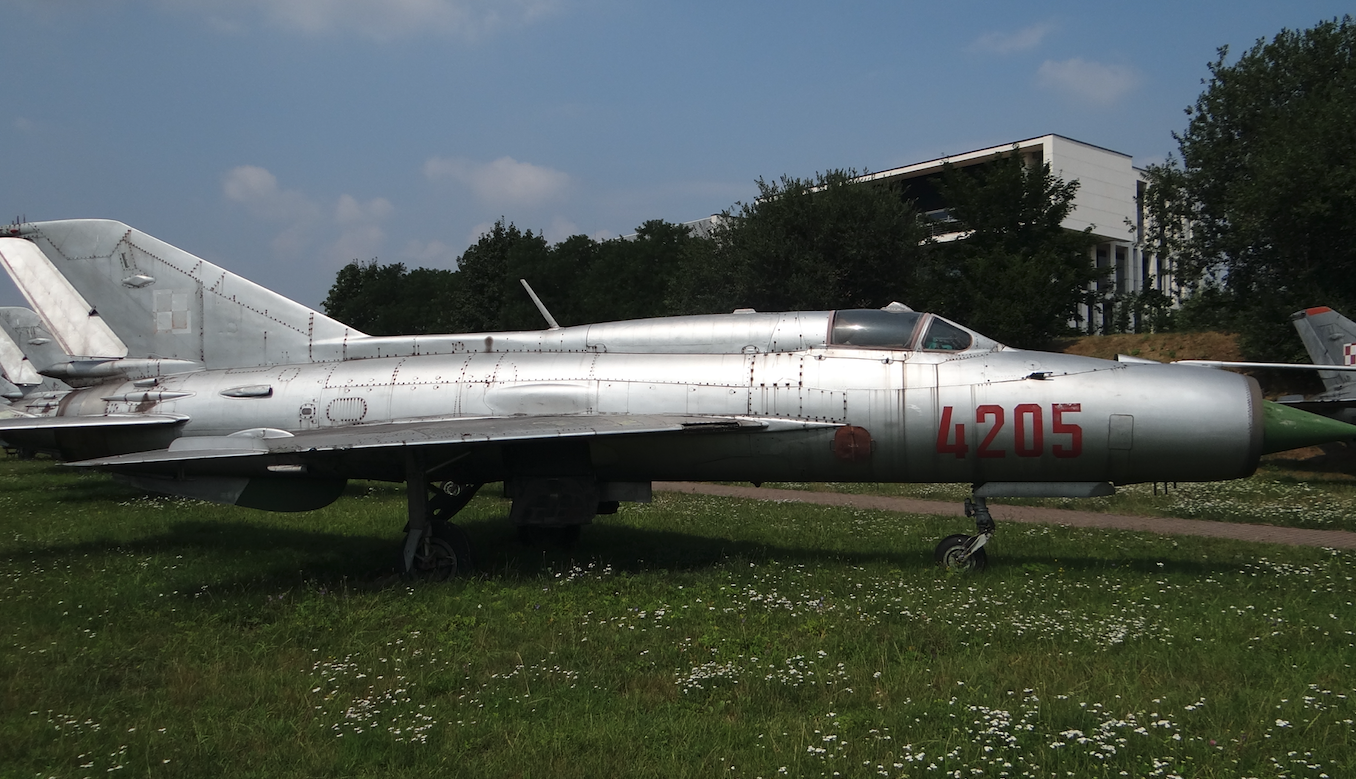
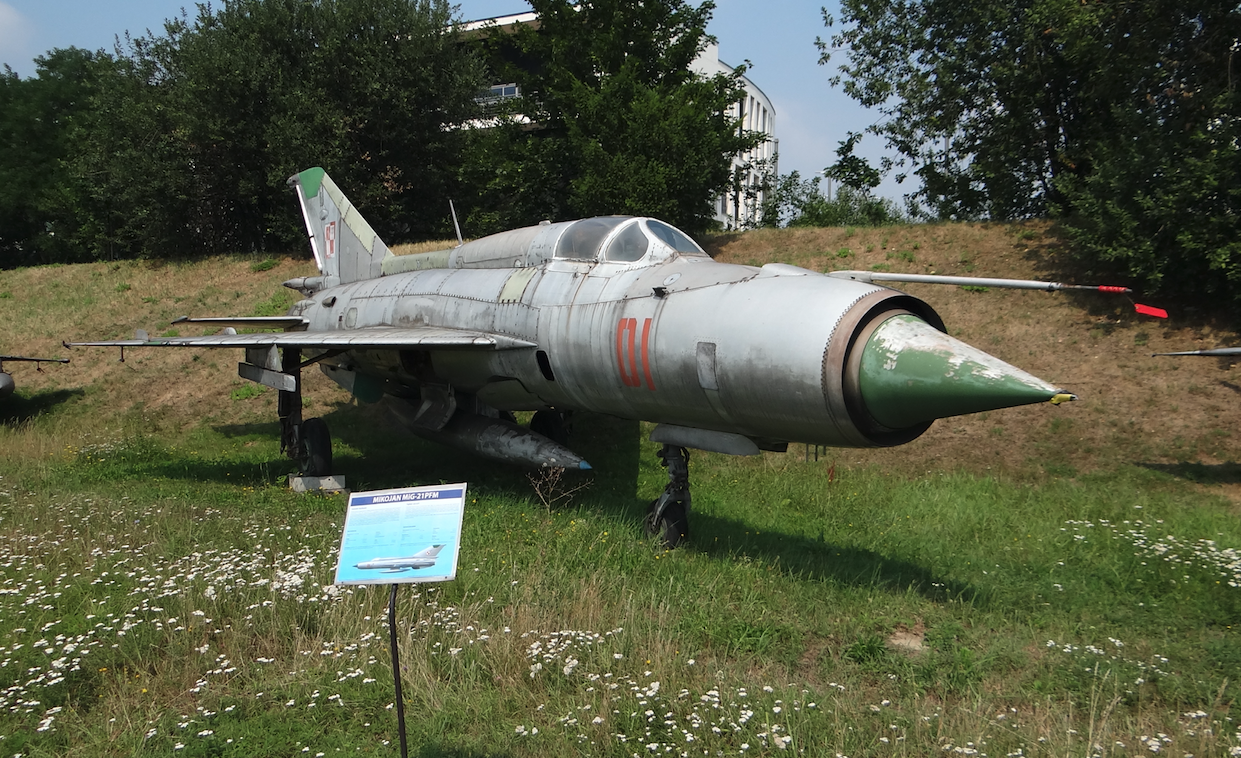
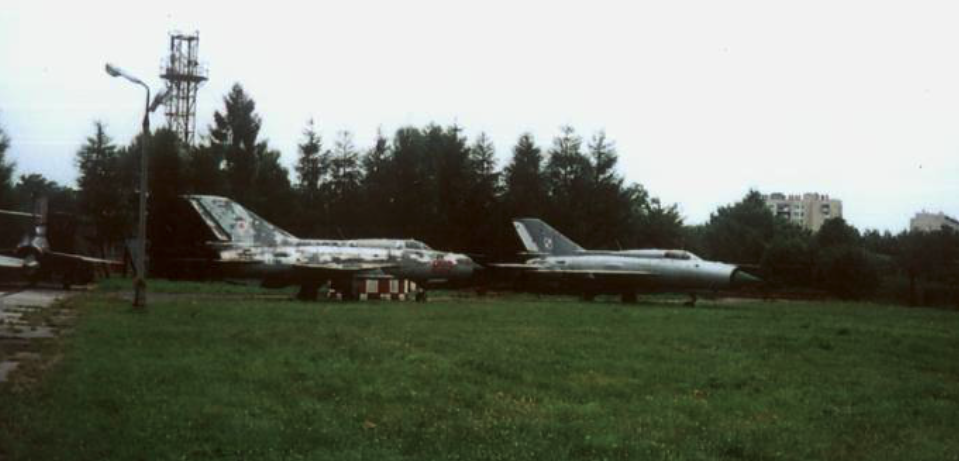
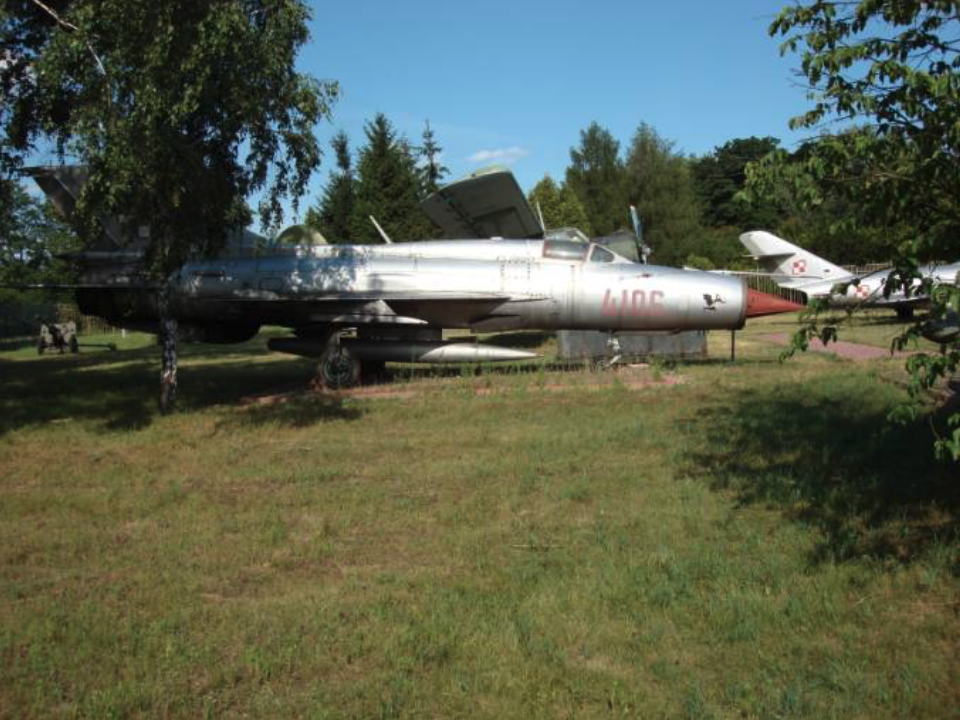
MiG-21 PFS.
On MiG-21 PF aircraft, the take-off and landing characteristics deteriorated. Therefore, two prototypes E-6 W / 1 and E-6 W / 2 were developed. They tested on them, among others; additional launch rockets, landing at increased angles of attack from 10-11 degrees to 16-18 degrees, and above all blowing on flaps. Blowing on the wing flaps was obtained by modernizing the engine. The engine in two places at the height of the last stage of the compressor received discounts for special pipes (channels) that lead to gaps located in the wings and directing compressed air over the deflected flaps. Due to this, the air flowing over the flaps has much higher energy and speed, which significantly increases lift force. This new engine was designated R-11 F2S-300.
The result of this research was the MiG-21 PFS (type 94, S from SPS). The aircraft together with the R-11 F2S-300 engine received a flap system, parachute at the base of the vertical tail, with the possibility of opening before the touchdown, with an area increased from 16 square meters to 19 square meters. The fighter was produced in Gorki for own needs and for export in 1964.
MiG-21 PFM.
It was built on the basis of the MiG-21 PFS aircraft. The vertical tail has been enlarged to 5.32 square meters. A new KM-2 ejection chair was used. He allowed the cabin cover to be changed to a permanent windbreak and a fairing that opens to the right. The aircraft received a new RP-21 M radar station, with increased resistance to passive interference. From the 7th production series, the aircraft has been able to move the GP-9 tank with a GSz-23 Ł double-barred gun with a supply of 200 cartridges.
The MiG-21 PFM aircraft (type 94, modernized) was manufactured in Gorki for own needs in 1964-1965, and in Moscow for export in 1966-1968.
MiG-21 FL.
The MiG-21 FL version (type 77, tenant or license) was built on the basis of the MiG-21 PF for aviation in India and other non-European countries. It has an enlarged vertical tail and a parachute at its base.
The aircraft is also known under the designation MiG-21 PFM (type 77). It was built in Moscow in 1965-1968. In 1964, his licenses were sold to India. As we remember, the first MiG-21 F-13 type 74 machines arrived in Mumbai in January 1963, and already in June 1964, India received the first MiG-21 PF type 76 aircraft. This year India bought a license to produce this version . At the end of 1966, the first license MiG-21 FL was removed from the HAL Hindustan plant hall. The components of this aircraft were manufactured in Moscow, and assembly and flight were carried out in India.
MiG-21 PFM for Poland. 1966.
From February 1966, deliveries of MiG-21 PFM type 94 to Poland began. The first batch arrived on February 4, 1966, with 10 machines. The planes found their way to the equipment of the 40th PLM Świdwin. Another 25 planes hit August 5, 1966. They were handed over to the 41st PLM Malbork, 34th PLM Babie Doły and 26th PLM Zegrze Pomorskie. This time the machines did not end up in Krzesiny, but directly to Świdwin, Malbork, Babie Doły and Zegrze Pomorski. In 1967, another 42 (35) MiG-21 PFM fighters appeared, and in 1968, as many as 55, resulting in 132 machines. As it turned out, the MiG-21 PFM was the most exploited version in Polish Aviation.
The new version of the MiG-21 PFM fighters was first intended for operational aviation regiments. It was at the beginning of February 1966 that the first 10 MiG-21 PFM aircraft landed at 40. PLM airport in Świdwin. It was a version designed especially for front aviation. These aircraft belonged to type 94 and had the number; 94 from ML-01 to ML-10. In this way, the 40th PLM was the first in Poland and the LO was equipped with the latest MiG-21 PF, PFM. These aircraft took part in the parade in Warsaw to celebrate the 1000th anniversary of the Polish State.
In mid-1966, the entire 41st PLM from LO was equipped with MiG-21 PFM aircraft. On 05.08.1966, as many as 23 MiG-21 PFM aircraft landed at the airport in Malbork. The aircraft came from 40, 41 and 42 production series. As you can see, the changeover rate in Polish aviation was enormous.
In 1967, supplies of MiG-21 PFM aircraft continued. Another 12 pieces of MiG-21 PFM were delivered on January 23, 1967, to the 40th PLM. We received planes with numbers no; from 94 A 4909 to 94 A 4915 and from 94 A 5001 to 94 A 5005 (12 pieces). During this period, the 40th PLM was the best armed regiment in Polish Aviation.
At the end of 1967 we had; in fighter aircraft 129 aircraft in 12 squadrons - 17 (20) MiG-21 F-13, 22 MiG-21 PF, 47 MiG-21 PFM and MiG-19, 40 Lim-5, 5 P, (MiG-17 PF) , 20 Lim-2. In fighter-attack aviation 148 aircraft in 12 squadrons - 88 Lim-6 bis, 60 Lim-2, 5. In fighter-bomber aviation 20 aircraft in 2 squadrons - 6 Su-7 BM, 14 Su-7 BKL. Plus bomber and reconnaissance aviation with 109 aircraft in 8 squadrons (including Il-28, Lim-2 and Lim-6 bis).
Deliveries of MiG-21 PFM aircraft were completed in 1969. A total of 132 machines. These machines allowed to fill the posts in the regiments already using the MiG-21 F-13, PF aircraft and to equip them with new combat regiments; 2. PLM (former 4. PLM) in Goleniów, 9. PLM in Debrzno, 26. PLM from Zegrze Pomorskie, 34. PLM-MW in Babich Doły. In 1969, we already had so many MiG-21 aircraft that we could fully arm seven fighter regiments.
A novelty in the Polish Army was the introduction of MiG-21 PFM aircraft for arming of maritime aviation. The aircraft went to the 34th PLM in Babie Doły.
In 1968, we received the last 12 MiG-21 PFM machines from the manufacturer. These aircraft were slightly different from all previously received. In their serial numbers was the letter N, and these were MiG-21 PFM aircraft from No. 94 N 7809 to 94 N 7905. In short, machines adapted to attack with nuclear bombs. However, in Poland it did not matter, because in the condition of the Polish Army there was no such weaponry, and the planes were operated like all others. These aircraft were in the equipment of the 9th PLM in Debrzno, which has just been reactivated, and the previous 11th PLM from Debrzno was moved to Wrocław-Starachowice in place of the 3rd PLM, which formally ceased to exist.
The rotation of the MiG-21 PFM machines began as early as 1970, when the next version of the MiG-21 M was introduced to our armament. A large amount of MiG-21 PFM was then moved from 41. PLM from Malbork to 62. PLM in Krzesiny. Then the type MiG-21 PFM first appeared on the state of 62. PLM. In addition, in 1971, the 62nd PLM received the MiG-21 US training and combat vehicle, with characteristics similar to the MiG-21 PFM, also equipped with an SPS installation. MiG-21 PF / PFM aircraft in 62. PLM were on the positions of the 1st and 2nd squadron, while the 3rd squadron was still flying on Lim-5.
As a result of organizational changes in 1971, the 40th PLM Świdwin becomes a hunting and assault regiment, i.e. the 40th PLM-Sz. This meant that the unit had to be changed. It was in 1971 that the regiment disposes of all its MiG-21 fighters by transferring them to other units, and adopts Lim-6 aircraft as basic equipment.
In 1974, reorganization took place in WOPK fighter aircraft. It consisted in the transition from a three-squadron structure to a two-squadron structure. Two squadrons of 18 combat aircraft were created in the regiments. It was the right decision. Simplified training and performing combat tasks. It also reduced the burden on the national budget.
In 62. PLM all owned MiG-21 PF / PFM / US were gathered in the first squadron, while the second operated Lim-5 aircraft. She still trained pilots for this type of aircraft for 2 and 3 KOPK. Only after obtaining the first-class pilot title on Lim-5 they were able to train on MiG-21. That was the procedure.
At the turn of 1979-1980, 62. PLM received another batch of MiG-21 PFM aircraft from the 11th PLM from Wrocław and the 26th PLM of Zegrze Pomorski, because they were then converted to the MiG-21 MF versions. The effect of introducing another new version of the MiG-21 MF to Poland was that in January 1981, the 62nd PLM ceased training on Lim-5 planes. Lim-5 planes were withdrawn from the positions of the 2nd Squadron, and in their place MiG-21 PFM was introduced, which finally completed the process of converting the regiment into supersonic aircraft.
The 1980s in the 62nd PLM was a period of intensive operation of MiG-21 PFM aircraft, not the first youth. Maintaining them in full technical efficiency was a real feat. Fortunately, there were plenty of spare parts. However, problems began to appear. From 1983, expenditure on aircraft maintenance began to decline, although initially this only affected the oldest aircraft. We did not wait long for the effects.
In 1987, a decision was made to dissolve the 39th PLM in Mierzęcice, and its airport was designated as an Aircraft Base. This regiment had a large number of MiG-21 PFM in stock, a significant part of which was already after major repairs at the Aviation Repair Works in Dęblin. It was decided to transfer these aircraft to 62. PLM. Thanks to this, from December 1987 to February 1988, the 10 oldest MiG-21 PFM 62 aircraft. PLM transferred to the 10th PLM in Łask. After this rotation, the 62nd PLM owned 43 MiG-21 PFM.
MiG-21 PFM planes reached the 10th PLM on December 23, 1987, the first two were No. 94 A 4013, 94 A 4203. The following year (1988), another MiG-21 PFM was incorporated, 17 in total. The first seven machines were adopted in February 1988, also from the 62nd PLM. Another was delivered from 39. PLM. In 1989, the regiment adopted from the 2nd PLM Goleniów, another 20 fighters, among them 3 MiG-21 PFM type 94 N machines, No. 94 N 7810, 94 N 7811, 94 N 7812.
In 1989, the Air Force Command decided to withdraw all the remaining MiG-21 PF / PFMs from service. The decision was right. After all, we already had the newer MiG-23, and the MiG-29 was launched. In addition, on the verge of socio-political changes, we were counting on the conversion of aviation into combat aircraft of Western production and support with aircraft produced in the country.
In the period from November 1989 to March 1990, the 62nd PLM submitted for cassation to the Aircraft Base (BSP) in Mierzęcice, all its MiG-21 PFM, i.e. 40 aircraft. In turn, he himself received from other units MiG-21 MF aircraft in the number of 24 machines. Mainly from the 11th PLM from Wrocław. The planes were 15-18 years old, but their failure rate was high. Therefore, in the spring of 1991, it was decided to restore the older version of the MiG-21 PFM to service. MiG-21 PF aircraft were completely deleted. In BSP in Mierzęcice, partially dismantled machines were again prepared for flight. The situation was a bit absurd. From May 1991 to August 1991, the 62nd PLM received again 26 pieces of MiG-21 PFM, and used for over a year MiG-21 MF transferred to the 10th PLM in Łask and the 11th PLM in Wrocław. The whole operation was very labor-intensive and expensive, although the history of aviation knows similar cases when returning to the previous version of the machines. But the recovered planes were not enthusiastically received by the pilots. A long stay in the open air, without adequate maintenance, meant that some of them after arrival to Krzesin practically were not operational, due to frequent defects.
In 1994, the then WLOP commander decided to stop refurbishing the MiG-21 aircraft. The reason was the deteriorating financial condition of Polish Aviation and the prospect of acquiring a new WSB (multi-purpose combat aircraft). In this situation, the savings were justified. However, the purchase of the new WSB was still receding for financial and political reasons, and the refurbishment ban systematically decimated the MiG-21 fleet.
On August 1, 1995, 62. PLM changed its name to 3. PLM.
Regular technical cannibalism was already underway in the second half of the 90s. In mid-1996, the Air Force Division of the 3rd Air Defense Corps carried out an analysis in the 3rd PLM in Krzesiny and made a forecast that by the end of 1998 the regiment would not have a single operational and approved combat aircraft. In addition, the resources of the machines inevitably ended. Life confirmed the analysis. In May 1997, the 3rd PLM already had only 14 functional MiG-21 PFMs, and remained one year until the end of their maintenance.
The MiG-21 PFM aircraft were finally decommissioned on December 11, 1997. The farewell ceremony for the MiG-21 PFM took place at the airport in Krzesiny on March 24, 1998.
Throughout the service, the MiG-21 PFM versions were operated in the following regiments; 2. PLM in Goleniów, 4. PLM then (since 1968) 2. PLM in Goleniów, 9. PLM in Debrzno (1968–1989), 10. PLM in Łask, 11. PLM in Wrocław, 26. PLM in Zegrze Pomorskie (since 1989 in the 9th PLM), 34. PLM-MW in Babich Doły, 39. PLM (until 1987) in Mierzęcice, 40. PLM (until 1971) in Świdwin, 41. PLM in Malbork, 62. PLM in Krzesiny (since 1995 in the 3rd PLM).
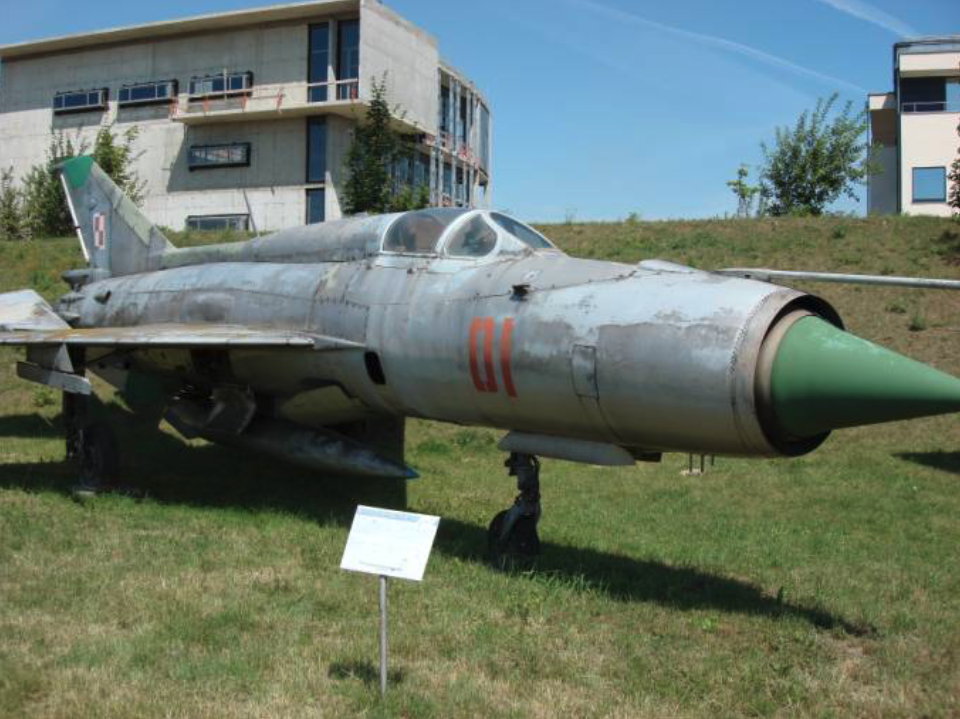
Combat tactics on MiG-21 PFM aircraft.
Until the mid-1980s, in Polish aviation, pilots were only trained in the subject of maneuvering air combat in the operations of a single aircraft or a pair of aircraft. The unpleasant experience of armed conflicts at the turn of the 1970s and 1980s made commanders aware of the need to prepare fighter aircraft for operations in larger formations. In Polish Aviation it was not so strange, because during the operation of the Jak-23 fighters group air combat was conducted. A new tactic was developed for the MiG-21 aircraft, which was included in the exercises of the 700 (7XX) group. Fully trained pilots were selected for training in this element, i.e. those who had already completed all levels of initiation and additionally demonstrated appropriate psycho-motor traits. Exercises were definitely different from those performed so far. There were 8-10 aircraft in the air. For example, 6 x 4 airplanes have been practiced. The fight was fought over a large space and often without eye contact. Two groups were guided at each other on opposite courses and only then did the fight take place. It was conducted according to established patterns, which were previously practiced individually or in pairs. These schemes were given short names; Knot, Arkan, Scallop and others. When the host threw such a slogan at the ether, everyone knew what to do. Because the area of the fight was large, it required constant looking both for themselves and for strangers. Flight maneuvers were often carried out.
During these exercises, pilots consciously performed an inclined loop, i.e. a loop inclined from the pilon by 20-30 degrees. This figure allows better observation of space and can be started from different initial speeds. When the opponent was making a tight turn, by making an incline loop you could stay within its limits.
During these exercises, Radiolocation Stations (SR) weren’t used, although in basic exercises target search using SR was trained. The reason is insufficient SR range and a small angle of space search. And above all, working SR reveals the location.
Attacks on meeting courses were not practiced on the MiG-21, although R-60 M missiles could theoretically be fired after targeting using an optical sight.
To sum up, the success was in the pilot's excellent eyesight, masterful mastery of the machine and experience gained. Even maneuvering keys were created in the regiments after passing these exercises.
Written by Karol Placha Hetman
